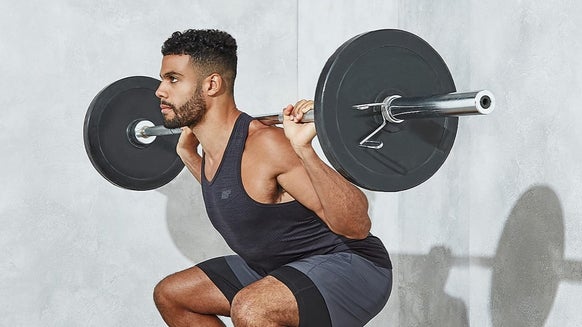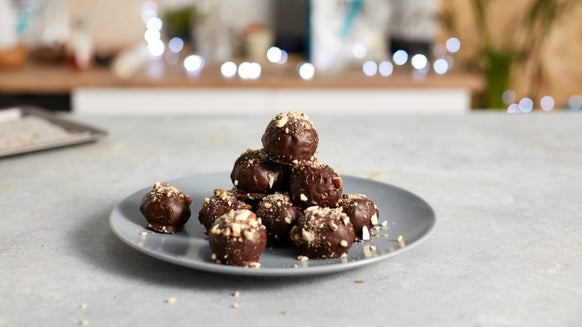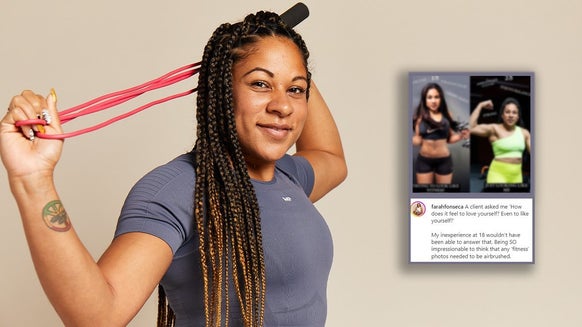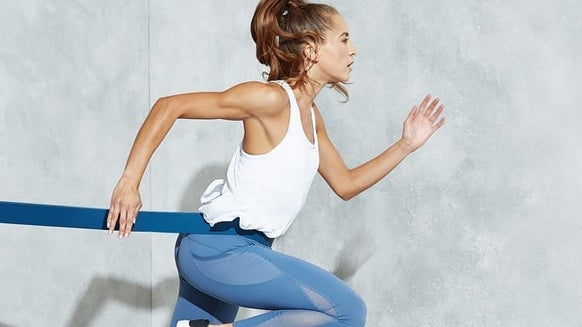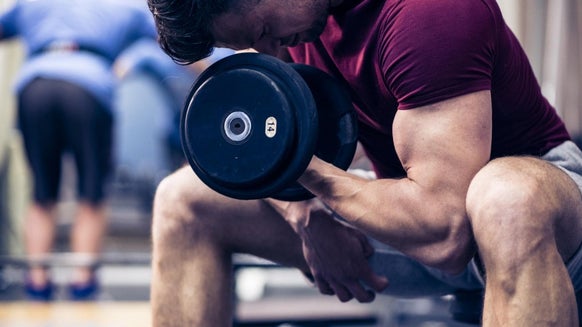
The goblet squat is one of the three most common squat variations using dumbbells. Read on for a detailed focus on the goblet squat, including how to perform technique correctly, as well as a description of common exercise mistakes and how to avoid them.
Goblet Squat Benefits
Wrist and ankle mobility: The goblet squat is easy for those who have poor wrist and ankle mobility, as the positions required are not very demanding. While it does require quite an upright torso, a heel wedge or weightlifting shoes can be used to help maintain the proper positions.
Home workouts: It can be performed easily at home and added to your home workouts, because the goblet squat doesn’t require a lot of space or equipment.
Stability: Often when performing exercises such as the barbell back squat, there can be poor balance or a fear of falling forwards. The goblet squat can feel like a more stable exercise, and it is also easy to bail out if you miss a rep.
Upper back strength: As you need to maintain an upright posture, your upper back muscles are put to work to maintain optimal positions. This makes the goblet squat not just a leg exercise, but an effective way to train your core and upper body too.
How To Perform The Goblet Squat
- Stand with your feet shoulder-width apart, facing forward, with a slight bend in the knees.
- Grip a dumbbell at one end (in a vertical position) and hold it close to your chest. It can also be performed using a kettlebell.
- Take a deep breath and brace. While keeping your chest upwards and back straight, slowly lower yourself so you’re sitting back and downwards.
- As with any squat, you should be aiming to go down to at least 90 degrees parallel to the ground or lower.
- Your elbows should be positioned on the inside of your legs at this point and throughout most of the movement.
- Once you’re as low as possible, explode back up to the starting position, maintaining good posture throughout the lift.
- The concentric (upward) phase of the movement should typically be performed quicker and more explosively than the eccentric (downward) phase.
- At this stage of the exercise, your chest should still be facing upwards, back not curved and feet should still be facing forwards.
- Pause for a brief second before repeating for the desired number of repetitions.
Goblet Squat Common Mistakes
Poor feet and knee positioning
When performing the goblet squat, ensure that your feet are firmly placed on the floor while facing as straight forward as possible. Poor feet and knee positioning can lead to undue stress placed on the knee joints.
Heel Position
Your heels should also be placed flat on the floor. If you’re performing this exercise and rolling forwards towards your toes, then there is far less efficiency in the movement; the knees are once more placed under unnecessary stress and there is a far greater likelihood of injury.
Hip positioning
When rising from the bottom position out of the squat, your hips should rise at the same rate as your shoulders and torso. Allowing your hips to shoot up can lead to you losing balance and dropping the weight, potentially causing injury.
Curving the back
Allowing your spine to round during a goblet squat is not inherently injurious. But it is more likely to result in injury and it is certainly less productive, as the target muscle groups are not being used properly. To fix this, lower the load used and take your time to focus on the proper technical execution of the lift. Effective lower back exercises include hyper-extensions, bridges and deadlifts as well as rehabilitation movements such as happy cat/sad cats, back extensions and knee rolls.
Not going low enough
Due to poor mobility, limited range of motion is far too commonly seen in the gym today. Those who try to lift more than they physically can will often perform with poor form and lack of depth. This reduces the expected stimulation of the quadriceps, glutes, hamstring and quads, and neglects almost all of the previously mentioned benefits.
To prevent this, choose a weight that you can perform to a 90-degree parallel level or lower, focus on the time under tension and perform it correctly! Alternatively, try performing a box squat. This will teach you to go low enough without the fear of falling to the ground, as the box is there to stabilise the movement and protect you.
Holding the weight too far away
This causes you to lose balance and can lead to you missing a rep by dropping the weight, or you will be forced to grind out the rep in suboptimal positions, potentially leading to injury. The fix for this is simple — just keep the weight close to your chest throughout the movement!
Take Home Message
Try the dumbbell goblet squat for a squat variation that’s beginner friendly and can be performed with very little equipment. The exercise is still highly effective at activating the quads and glutes, so make sure to add it to your sessions!

